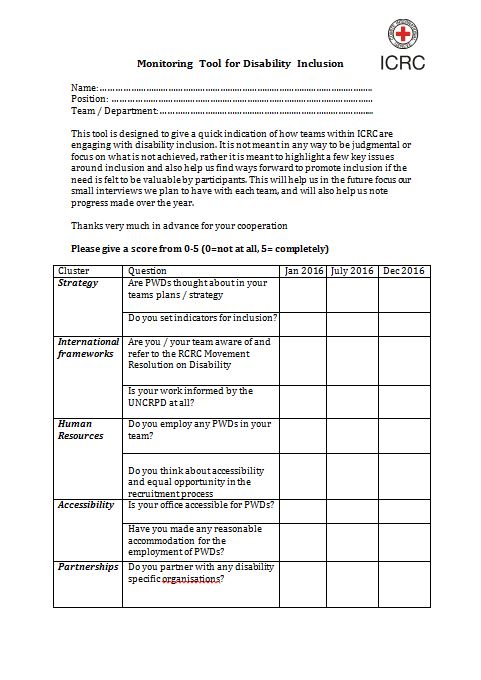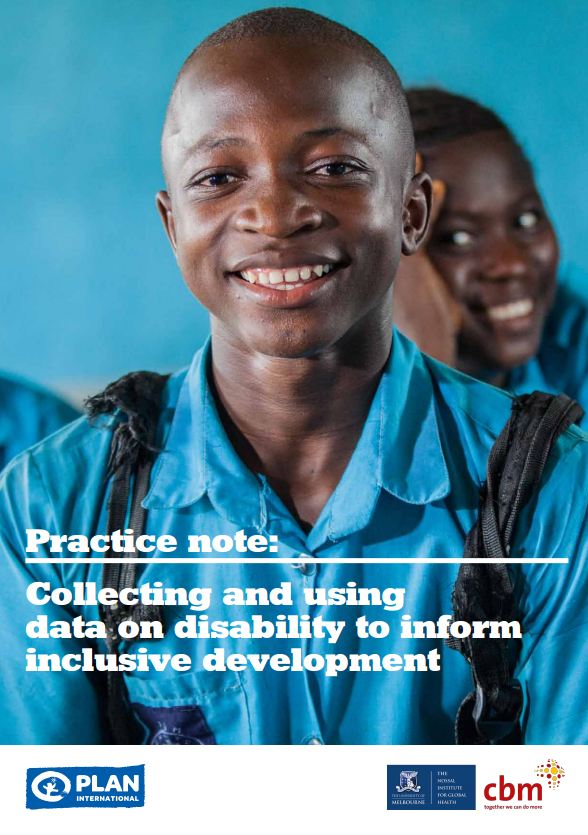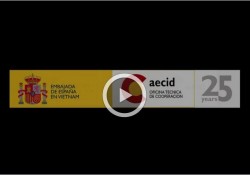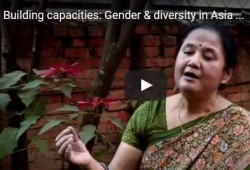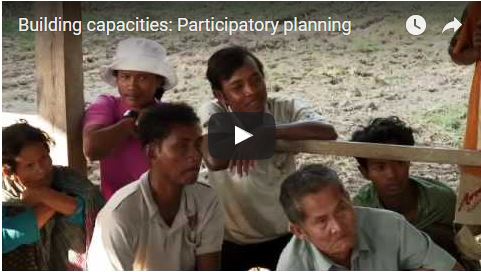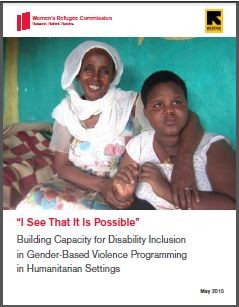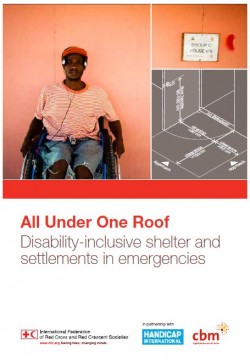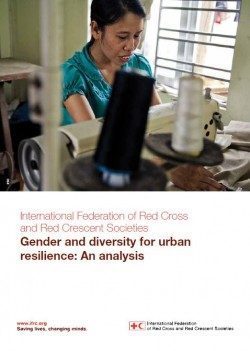Purpose:
This tool is designed by the ICRC to give a quick indication of how their teams engage with disability inclusion. It is not meant in any way to be judgmental or focus on what is not achieved, rather it is meant to highlight a few key issues around inclusion and also help us find ways forward to promote inclusion if the need is felt to be valuable by participants. The tool helps them to focus their interviews with each team, and also help them note progress made over the year.
Overview:
The monitoring tool is built around the aspects of strategy, international frameworks, human resources, accessibility, partnerships, projects, budget allocation, planing, monitoring and evaluation.
Usage: Self assessment
Audience: National Society Headquarter and Branches
![]()


